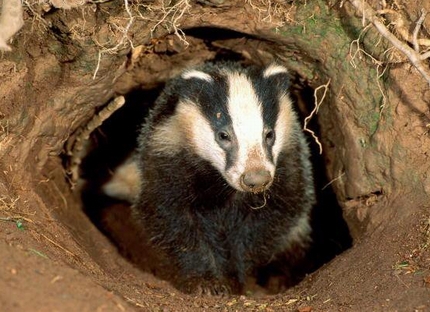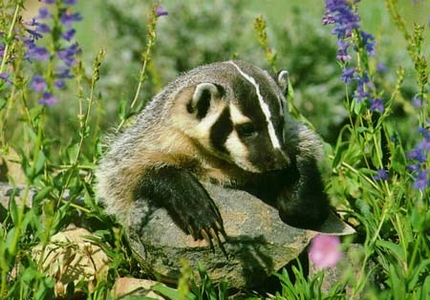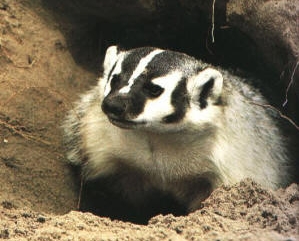San Antonio parks and recreation officials recently decided to close three city parks and wilderness areas on the city’s northwest side off I-10, citing public safety concerns amid TV news reports about a series of reported mountain lion sightings. Several department Wildlife Division employees investigated the reports this past week, interviewing witnesses and visiting the three parks and also Leon Creek river drainages under I-10, but TPWD found no physical evidence of a lion. Continue reading Mountain Lion Sightings Cause Park Closures
Category: Predators & Varmints
Badger Biology and Behavior
Badgers are members of the weasel family and have the musky odor characteristic of this family. They are especially adapted for burrowing, with strong front legs equipped with long, well-developed claws. Their digging capability is used to pursue and capture ground-dwelling prey. Typical burrows dug in pursuit of prey are shallow and about 1 foot (30 cm) in diameter. A female badger will dig a deeper burrow (5 to 30 feet long [1.5 to 9 m]) with an enlarged chamber 2 to 3 feet (0.6 to 0.9 m) below the surface in which to give birth. Dens usually have a single, often elliptical entrance, typically marked by a mound of soil in the front. Continue reading Badger Biology and Behavior
Food Habits of Badgers
Badgers are opportunists, preying on ground-nesting birds and their eggs, mammals, reptiles, amphibians, and insects. Common dietary items are ground squirrels, pocket gophers, prairie dogs, and other smaller rodents. Occasionally they eat vegetable matter. Metabolism studies indicate that an average badger must eat about two ground squirrels or pocket gophers daily to maintain its weight. Badgers may occasionally kill small lambs and young domestic turkeys, parts of which they often will bury.
Badger Identification
The badger (Taxidea taxus) is a stocky, medium-sized mammal with a broad head, a short, thick neck, short legs, and a short, bushy tail. Its front legs are stout and muscular, and its front claws are long. It is silver-gray, has long guard hairs, a black patch on each cheek, black feet, and a characteristic white stripe extending from its nose over the top of its head. The length of this stripe down the back varies. Badgers may weigh up to 30 pounds (13.5 kg), but average about 19 pounds (8.6 kg) for males and 14 pounds (6.3 kg) for females. Eyeshine at night is green.
Economic Impacts of Coyote Damage
Coyotes can cause a great deal of economic damage and loss on a broad scale. Of course, goat and sheep ranchers can potentially feel this loss the worst. Sheep numbers in the United States have declined about 80% from 1942 to 1976. Former sheep producers reported that the principal reasons for leaving the sheep industry included high predation losses, low lamb and wool prices, a shortage of good hired labor, and the producer’s age. Continue reading Economic Impacts of Coyote Damage
Controlling Coyotes and Preventing Damage
For managing coyote damage, a variety of control methods must be available since no single method is effective in every situation. Success usually involves an integrated approach, combining good husbandry practices with effective control methods for short periods of time.
Regardless of the means used to stop damage, the focus should be on damage prevention and control rather than elimination of coyotes. It is neither wise nor practical to kill all coyotes. It is important to try to prevent coyotes from killing calves or sheep for the first time. Once a coyote has killed livestock, it will probably continue to do so if given the opportunity.
Equally important is taking action as quickly as possible to stop coyotes from killing after they start. Continue reading Controlling Coyotes and Preventing Damage
Indentification of Coyote Damage
Coyotes can cause damage to a variety of resources, including livestock, poultry, and crops such as watermelons. They sometimes prey on pets and are a threat to public health and safety when they frequent airport runways and residential areas, and act as carriers of rabies. Usually, the primary concern regarding coyotes is predation on livestock, mainly sheep and lambs. Predation will be the focus of the following discussion. Continue reading Indentification of Coyote Damage



